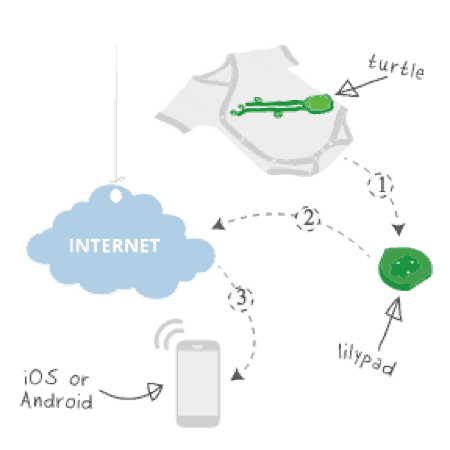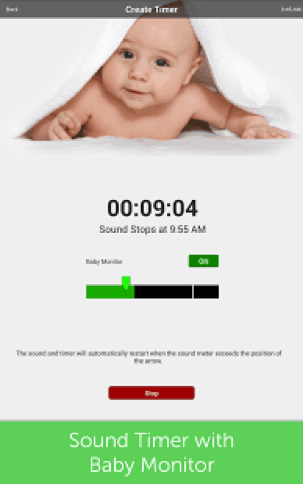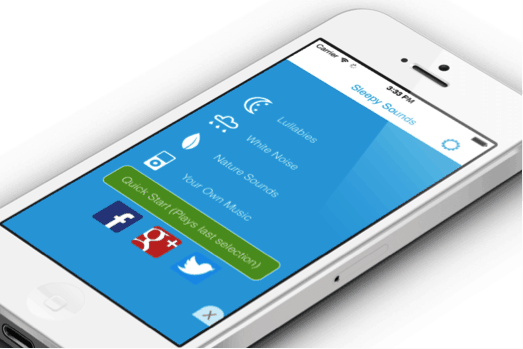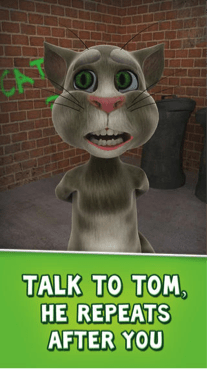Digital parenting technology is on the rise. Parents are looking for apps, software, and devices that have a practical purpose in their life; keeping kids entertained on road trips, or simply things that will improve in-home entertainment networks.
One aspect of parenting technology that is growing exponentially is baby tech – technology that helps you look after and get to know your baby better. Technology designed to help your baby get to sleep is some of the most popular and widely used baby tech, but there’s also an increasing amount of wearable tech for babies. Here are a few of the more exciting advances in baby tech:
Sleeping technology for babies
Wearable baby technology
 The Mimo takes baby monitors to the next level. This cute onesie has inbuilt sensors that can detect a baby’s breathing patterns, sleep patterns and position, and body temperature. The sensors then wirelessly connect to your smartphone via the Lilypad app, which notifies you if anything’s going awry with your baby during nap time. This amazing little onesie can also live stream audio, offering the more conventional aspects of baby monitors as well.
The Mimo takes baby monitors to the next level. This cute onesie has inbuilt sensors that can detect a baby’s breathing patterns, sleep patterns and position, and body temperature. The sensors then wirelessly connect to your smartphone via the Lilypad app, which notifies you if anything’s going awry with your baby during nap time. This amazing little onesie can also live stream audio, offering the more conventional aspects of baby monitors as well.
White noise apps
Apps that play white noise to help adults with their slumber are now being used by parents to help comfort and soothe their baby to sleep. So if you’re having trouble sleeping, these apps are great for you as well as your baby. Here’s our pick for the best white noise apps to try with babies:
 White Noise Baby
White Noise Baby
This app is available on Android and iOS for your iPad or iPhone. You simply download the app on your preferred device, choose a sound, set the timer, and off you go. The inbuilt baby monitor will re-activate the app and start playing sound if your baby starts to cry.
Simply Rain
Who doesn’t love the sound of rain pounding down on your roof in the middle of the night? SimplyRain lets you choose what level of downpour you’d like, and for how long you’d like the audio to play.
White Noise Ambience
This app is particularly good for noisy households, especially those close to the road or in a noisy downtown area. With an array of natural sounds like ocean waves and campfire, White Noise Ambience is high quality sleep inducing audio.
 Sleepy sounds
Sleepy sounds
The best thing about this app is the array of audio choices: white noise, nature sounds – even lullabies! The app also has accompanying animation to light up a dark room just like a night light. This one is good for babies and toddlers for that very reason. It’s also available on iOS and Android.
 Talking Tom Cat
Talking Tom Cat
This one is fantastic for those bubs who are learning the gift of a gab, and spend their days babbling away. Talking Tom repeats back what baby says, but transforms it into a funny little Tom Cat voice.
You can also record and watch videos through the app, and re-live your Talking Tom time. You can chat to Tom on any iOS or Android device.
Tablets and iPads
Tablets and iPads are a little more resilient than your smartphone, and easier for young children and toddlers to grip when watching programmes. Not only that, but the larger screens make viewing content that much nicer. Here are a few ways you can set up your tablet to work for your baby or young child:
YouTube white noise
If you want a bit more variety than a white noise app can offer, try YouTubing some white noise audio. There are lots of videos available that run for varying amounts of time. And this way you can keep your smartphone on hand next to your bed, without having to worry about it ringing in the middle of the night and waking your baby.
Chromecast + YouTube
With Netflix and YouTube providing a wealth of inexpensive and free content, we’re faced with more viewing content than ever before. But whilst YouTube and Netflix have grown in popularity for their use across tablets, iPads, and laptops, sometimes it’s just better to watch something on the big screen. And one way to do this, especially if you don’t have a smart TV setup, is to use
Google’s Chromecast device – a very affordable, device that plugs into the back of your TV to give it Internet capabilities. It lets you sync up other devices to “cast” videos from your device to the TV. So you can share those weekend snaps and holiday videos on the big screen.

Self warming baby bottle
The Yoomi is a self warming baby bottle. It comes in two parts: the bottle and the warmer. The bottle is just like any other baby bottle, with a teat and grippable sides, but the warmer is the special part. The warmer is much like the gel warming packs you use to warm your hands and feet during a day on the snow. Just like these gel warmers, you click a small metal disc on the warmer to activate the warming liquid. The warmer clicks on to the bottle and heats the milk to 32-34 degrees celsius, the same as natural breast milk temperature. The best thing about these is not only that the warmer stays warm for up to an hour, but that it’s reuseable. Each warmer can be regenerated by boiling it (and sterilising) in hot water, up to 150 times!
https://www.youtube.com/watch?v=7Qlq3fSdoB4
Less conventional baby technology
The Baby Shusher
This noise making machine claims to help babies settle themselves by producing rhythmic ‘shush’ sounds. Much like white noise machines for infants, The Baby Shusher is growing in popularity. It can be used alongside a white noise machine, but is different in that it’s designed to be used for short periods (auto timers of 15 or 30 minutes), whereas a white noise machine can be run throughout your baby’s sleep period.
Want some help setting up new devices?
Technology that helps parents be more organised and make life easier is becoming more prolific, but setting up computers to work with these new technologies can be tricky. If you need a hand setting up your new baby technology, whether it’s setting up an iPad to work with your baby monitor or training on how to synchronise your baby technology across all devices, our Geeks can help.
Further reading:
- http://www.theverge.com/2015/7/12/8935643/thick-heavy-nearly-indestructible-in-praise-of-the-original-ipad
- Baby Monitor Reviews – Consumer’s review of a range of baby monitors available in New Zealand.
